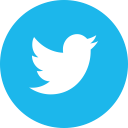
24 May The Future of Education is Here, and the Future of Work is Near
As my daughter, Talia, prepares to graduate this month, I’ve been thinking a lot about the education she has received, and the ways in which it might be put to use. I’ve been an observer of her formal education for the past decade+. Over the course of that time, I’ve noticed that things are done quite differently than when I was in school.
It seems kids today are learning more critical thinking, creativity, teamwork, and problem solving – which is exactly what we need in the workplace.
If I had to pinpoint the main difference, I’d say that schools are teaching more generalized skills, rather than a field-specific curriculum. Ultimately, what this boils down to is increased flexibility. It seems kids today are learning more critical thinking, creativity, teamwork, and problem solving – which is exactly what we need in the workplace. The education system is evolving and becoming more fluid — nurturing transferable skills in a new way. What’s more, they’re valuing the kids’ intuition and independence more than ever before, trusting them to be active participants in forging their own path.
Talia’s senior year is the perfect example of this. Her high school actually allowed her to design her own curriculum for her Senior Experience, which is an opportunity to pursue work experience or an independent project. Instead of being required to get a traditional job, Talia was given the freedom to explore her specific interests and goals, uninhibited by the traditional restraints of a typical syllabus. Inspired by the untraditional and personally curated experience, Talia was able to explore entrepreneurship by setting up and launching a curated thrift store on Instagram, choreograph and perform a modern dance at an upcoming recital, and design and plan dance and art curriculum for a neighborhood kids camp. She’s a dream student, but being given the freedom to design her own learning she has not only brought an increased level of enthusiasm to the three projects, its super charged her confidence.
The system has learned to appreciate and foster students for their unique abilities and their innovative ways of doing things.
Rather than the rigid institution I remember, students are experiencing learning in a way that has adapted to the times. The system has learned to appreciate and foster students for their unique abilities and their innovative ways of doing things. Her final report reflects her learnings across so many different experiences – entrepreneurship, managing multiple projects and deadlines, managing clients and allows her to lean into her various passions. She is learning more than she ever would in a retail job or traditional internship.
Here’s another anecdote to paint a picture of this. We were listening to the President of Vassar College share a story about what she loves about Vassar students. She shared that she traditionally has a student help with an orientation program. Traditionally this has entailed gathering and compiling information in binders – but given the goal of creating a great onboarding experience, the student went on to build a website with all of the relevant information and more. The website was incredibly engaging, accessible in advance of the program, and had links to relevant materials beyond what was traditionally shared. While the college President didn’t give any specific parameters, she gave the student the previous year’s binder and was expecting more of the same. Instead, the student went above and beyond with her own innovative style, solving a problem not just for the immediate term but creating a more evergreen solution that could be leveraged in the future. If the President had been strict with the guidelines, the student would have been put in a box and the outstanding outcome would never have been realized. Since the student was given the freedom and flexibility to take matters into her own hands, the result was better than imagined. In fact, the entire long-term approach to this sort of project was redesigned based on her ingenuity.
While the education system has done an incredible job of adapting to modern times, the labor system is not yet in tune with this.
When youth are given the freedom to interpret projects and lead with creative solutions, the outcome is often a happy surprise. While the education system has done an incredible job of adapting to modern times, the labor system is not yet in tune with this. The education system has prepared these students to be great assets to any team, yet the corporate environment is not hospitable to them. They graduate with limitless potential, but are often undervalued and underutilized, confined by rigid protocols and restrictions. Their voices are often shut down because they don’t have the “experience” or “understand” how things are done. Without a certain level of flexibility and trust in the youth, businesses are unable to utilize the skill sets that people are developing at school. In order to be taken seriously, recent graduates have to spend years climbing the corporate ladder, beginning with countless unpaid, and often uninformative internships. This is just not conducive to an efficient model of work.
Companies need to prepare for talent that wants to and will need to do things differently. Managers can’t do business as usual if they want to give their team room to grow and improve.
Nearly 40% of global candidates report that schedule flexibility is now among the top three factors they consider when making career decisions.
As we’ve learned over the past year, one of the ways freedom can be afforded effectively is the option to work remote. Gen Z is all for the gig economy because it gives them free-range to work when and where they want. Working from anywhere provides a happy medium in which they can have a long-term, sustainable career while also enjoying the perks of “gig life.” In fact, “nearly 40% of global candidates report that schedule flexibility is now among the top three factors they consider when making career decisions.” This doesn’t have to manifest in remote work, it could also be flexible arrival and departure times, more time off — there are a variety of ways in which the flexible workplace can be realized.
Another way managers can encourage employees to share their creative ideas is to host regular brainstorming sessions with all team members, not just higher-ups. Not only does this yield innovative ideas, it also gives employees confidence and autonomy.
The future of work is different and exciting, and we have to innovate what that looks like. At the core, uber flexibility, purpose, and communication are key.
In addition to group sessions, consistent one-on-one check-ins with employees makes them feel valued and heard. Giving them a safe space to voice their concerns and ideas is one of the best ways to stay on top of communication and transparency. The future of work is different and exciting, and we have to innovate what that looks like. At the core, uber flexibility, purpose, and communication are key. Tune into our next blog for more on the flexible workplace!
Shaara Roman is founder and CEO of The Silverene Group, a culture consultancy that helps companies align their people programs with business goals.



